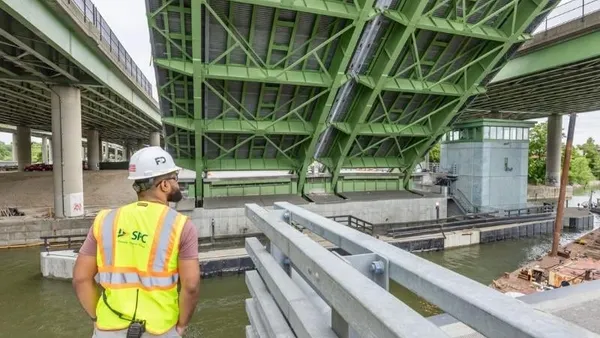Dive Brief:
- The Orange County (California) Transportation Authority Board of Directors this month authorized a $43.4 billion, long-range plan that will shape the area’s transportation “blueprint” for at least the next 20 years.
- The Designing Tomorrow plan will address an estimated 66% increase in traffic congestion by the year 2040, driven by an anticipated 10% rise in area population, a 17% uptick in the number of local jobs and 12% more daily trips. Using input from the community, the plan prioritizes traffic signal synchronization, road and freeway maintenance, exploration of “innovative” transportation options (i.e., autonomous vehicles and on-demand ridesharing) and a balanced approach to spending, which includes investing across a variety of transit programs. Planned projects include the construction of high-occupancy vehicle lanes, regular lanes, express lanes, interchanges and toll roads.
- Sixty-eight percent of funding as proposed will come from Orange County’s Measure M one-half cent sales tax, 22% from state programs and 10% from federal programs. The plan will now be submitted to the Southern California Association of Governments as input for the SCAG’s 2020 Regional Transportation Plan/Sustainable Communities Strategy.
Dive Insight:
Already under construction is Orange County’s $1.9 billion Interstate 405 project, which will see the addition of regular lanes and express lanes along a portion of the highway. Crews will add one lane in each direction and will convert existing carpool lanes into tolled express lanes, free for drivers of vehicles carrying at least three passengers. Measure M is paying for the bulk of the project costs — about $1.14 billion — while state funds ($90 million); federal funds ($46 million); and a federal Transportation Infrastructure Finance and Innovation Act loan ($629 million), secured by express lane revenues, will pick up the rest. The project should be complete by 2023.
Orange County awarded the project to OC 405 Partners, a joint venture between Obrascón Huarte Lain USA and Astaldi Construction Corp. approximately two years ago under a $1.2 billion contract, the largest design-build contract in county history. Pacific Infrastructure 405 Designers, a joint venture between Moffatt & Nichol, H.W. Lochner Inc. and Arup North America Ltd., is the design team for the project.
This was the first design-build highway initiative under a new state law that allows California transportation agencies to use the method for such projects. The hope is that California highway construction projects can benefit from the advantages of design-build — fewer change orders, overruns and delays due to increased collaboration during the earliest phases.












